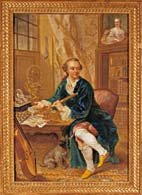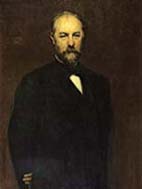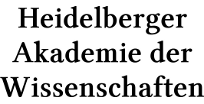History of the Heidelberg Academy of Sciences and Humanities
 „Elector Carl Theodor in his Study“ Painting by Johann Georg Ziesenis (1757/L 542) Bavarian National Museum, Prinzregentenstraße 3, 80538 Munich |
The Kurpfaelzische Akademie der Wissenschaften in Mannheim The Heidelberg Academy of Sciences and Humanities is in the direct line of succession that
dates back to the Kurpfaelzische Akademie der Wissenschaften (Academy of Sciences of the
Electoral Palatinate) established in Mannheim in 1763 by Elector Carl Theodor of the
Palatinate (1743-1799). As a ruler Carl Theodor was poised half-way between absolutism and the
claims of the Enlightenment and his policies were strongly marked by the interest he took in
culture and education. His reign extended over half a century and in that time Mannheim became a
centre of the arts and sciences. The establishment of the Kurpfaelzische Akademie der Wissenschaften
was advocated by Voltaire and it represented the pivotal agency for the Elector’s patronage of artistic
and intellectual activity. |
 Portrait of Heinrich Lanz Painting by Max Koner (1854-1900) or from his workshop Photo: Foto-Gaertner, Heidelberg |
The establishment of the Heidelberg Academy of Sciences and HumanitiesJust over a century after these events the Mannheim industrialist Lanz and his family gave the
institution a new lease of life by providing the material basis for a new Academy with a donation
of one million gold-marks. Under the patronage of the Grand Duke of Baden, the Heidelberg Academy
of Sciences and Humanities was inaugurated on 3 July 1909 with a festive ceremony to mark the occasion.
The founding document, the seal and the medals emphasise the Academy’s close links with the traditions
of the Kurpfaelzische Akademie. Since 1920 the Academy has been housed in the former
residence of the Grand Duke on Karlsplatz square.
|

